Toddington Church Architecture
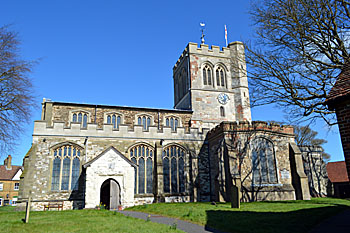
The church from the south-east March 2016
Saint George's Church, Toddington stands on an ancient site in the centre of the village to the north of Market Square and the west of Station Road. It is built mainly from Totternhoe stone, or "clunch", on a cruciform plan which dates from the 13th century, with a crossing tower, aisles and transepts; the consecration of a new church was recorded in 1222. The church is not built on a true east-west axis but rather south-west to north-east.
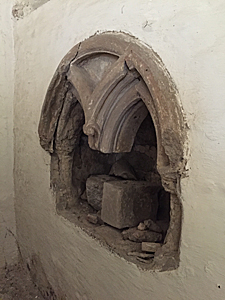
Piscina in the south transept June 2015
The double piscina in the south transept appears to date from the mid-13th century, as do the low, narrow crossing arches. Traces of 13th century work also remain in the lancet widow at the west end of the south aisle and the lower stages of the tower, with a small amount of late 13th century external detail to the south doorway.

The north arcade and clerestory March 2016
The four-bay nave arcades were probably added c.1300 or a little later. These have high octagonal piers and double-chamfered arches.
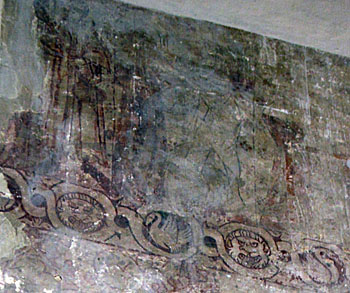
Wall painting over the south door detail March 2016
Some 14th century wall paintings were uncovered in 1930. Unfortunately these are now extremely faint. In the south aisle there are dim fragments of scenes including the Coronation of the Virgin, and a guilloche band of medallions with leopards' heads and swans. Scenes of St. Michael weighing souls and the Seven Acts of Mercy are no longer identifiable. On the north side are two trees, one with a bird and several figures, and a band with tools such as hammers, nails and pincers.

Chancel roof detail June 1015
The church was extensively rebuilt and remodelled in the 15th century, giving the overall impression of a perpendicular building. The clerestory and the roofs of the chancel and nave are all perpendicular.
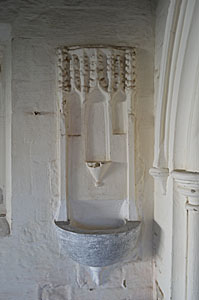
Stoup in the north porch March 2016
Heraldic shields around the roof are associated with Thomas Peyvre, who died in 1429. The south porch, with its roof of curved windbraces and angels, and the stoup in the north porch are also perpendicular.

A skull on the north-west face of the tower March 2016
Tree-ring dating gives dates of mid-14th century for the wall-plate of the tower roof and early 15th century for the belfry floor and the tower roof itself – the style indicates that the latter date is more likely to be correct.
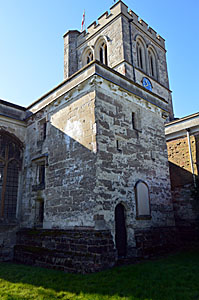
The vestry and parvise March 2016
To the north of the chancel stands a three-storey vestry, the upper storeys of which were originally accommodation for the priest, known as a parvise. There are two separate newel stairs within the vestry, one entered from the chancel and the other from the churchyard. Both were originally higher than they are today.

The south transept June 2015
The south transept contains a number of monuments. The earliest is a severely damaged effigy of a knight dating from the early 14th century. In the south wall are two perpendicular recesses with early 15th century effigies, probably of Thomas Peyvre and his wife. There are also three 16th and early 17th century effigies on tomb chests: Dame Anne Cheyne d. 1561; Henry Lord Cheyne d.1587; and Lady Cheyne, d.1614. The latter two are both significantly damaged.
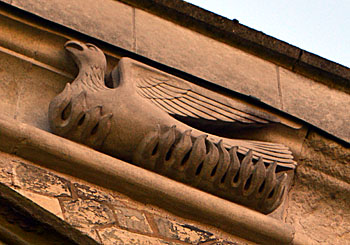
A phoenix March 2016
Most of the exterior dates from early 16th century, including a frieze added to north side under battlements. This comprises beasts including an otter, fishes, a hawk, peacocks, a griffin, a mermaid, a wyvern and a sow and piglets.
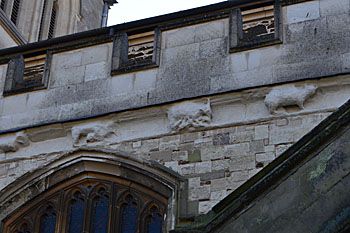
Worn corbel table on the north wall March 2016